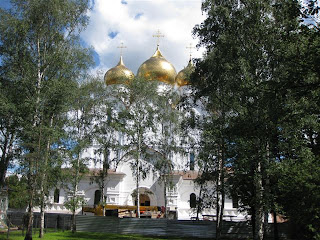
Location: Toronto, Ontario, Canada
Original purpose: Temple
Current purpose: TV studio
Affiliation: Masonic
Open to public: No
Toronto Masonic Temple at


Here is a very detailed article about the history of the building…
View Larger Map
Review of most interesting temples, churches, cathedrals and other places of worship or spiritual landmarks all over the world



Here is a very detailed article about the history of the building…
 Location: Montreal, Quebec, Canada
Location: Montreal, Quebec, Canada


 Oratory itself is a very imposing more modern structure, with very little of crypt's intimacy or passage's spirituality.
Oratory itself is a very imposing more modern structure, with very little of crypt's intimacy or passage's spirituality.
 Today it represents an interesting mix of industry and tourism. Its river cruise terminal is always full of ships. The main attraction here is the immense number of churches. With a fairly low skyline, one can see green and gold onions all over the place. Sometimes, even regularly looking old houses turn out to be a church of some kind at close examination. For example, right across the street from Premier Ring hotel, there is a complex of churches left over from an ancient monastery, which until five years ago served as a tram yard with no indication of its spiritual heritage.
Today it represents an interesting mix of industry and tourism. Its river cruise terminal is always full of ships. The main attraction here is the immense number of churches. With a fairly low skyline, one can see green and gold onions all over the place. Sometimes, even regularly looking old houses turn out to be a church of some kind at close examination. For example, right across the street from Premier Ring hotel, there is a complex of churches left over from an ancient monastery, which until five years ago served as a tram yard with no indication of its spiritual heritage. 




